The study in three sentences
The study proposes a documentation center on the NSU complex that, starting from the perspectives of those affected, strengthens alliances of solidarity, makes marginalized perspectives visible with art and science, and conveys, expands and preserves knowledge.
The study recommends Chemnitz and Zwickau as locations: both form a common space of experience in which the NSU was able to form and operate.
The documentation center is conceived as a hub in a nationwide reappraisal network; the appropriate framework for its operation is provided by a foundation under private law, to which other reappraisal initiatives can also link up.
What do we mean when we talk about the NSU complex?
Enver Şimşek, Abdurrahim Özüdoğru, Süleyman Taşköprü, Habil Kılıç, Mehmet Turgut, İsmail Yaşar, Theodoros Boulgarides, Mehmet Kubaşık, Halit Yozgat, Michèle Kiesewetter – these are the names of the people murdered by the National Socialist Underground (NSU) between 2000 and 2007. Dozens more were injured or traumatized in three bombings and 15 robberies by the NSU. Atilla Özer died in 2019 from late effects of the attack in Cologne’s Keupstraße.
The NSU’s acts were made possible by:
a broad environment of supporters in the neo-Nazi scene – which continues to exist today and only a small part of which has been prosecuted at all,
an interlocking of German intelligence services with this scene – intelligence services that, despite their involvement, were subsequently massively strengthened in terms of personnel and material,
structural and institutional racism in the criminal investigation authorities – for the elimination of which comprehensive and effective measures are still lacking today,
an uncritical adoption of racist interpretations in the media and the majority society – interpretations that in part continue to determine political, media and public discourse,
as well as a lack of awareness and solidarity with those affected in civil and majority society – an issue of justice that also needs more attention in light of current right-wing terror.
For some years now, all of this has been subsumed under the term NSU complex.
Why is the NSU complex still highly relevant today?
This complex represents a caesura in German society – there is a before and an after in dealing with racism. This is primarily due to a counter-movement that was able to open up a social space for those affected in an act of self-empowerment. It demands the fulfillment of the democratic promise of equality to all members of this society.

Why do we need a documentation center on the NSU complex in Saxony?
Saxony is the federal state in which the NSU formed and planned and carried out attacks, integrated into a local as well as supra-regional network of supporters. The conditions that made these activities possible have not been dealt with. Saxony was and is a center of neo-Nazi organization, which inevitably entails right-wing violence. Despite the large number of people affected – in Saxony alone, the counseling centers have counted 5,447 people directly affected by right-wing-motivated attacks since 2009 – they are quickly lost from view. In order to help them gain more visibility and to counteract right-wing space grabbing, Saxony’s civil society in particular has strongly demanded a documentation center on the NSU complex.
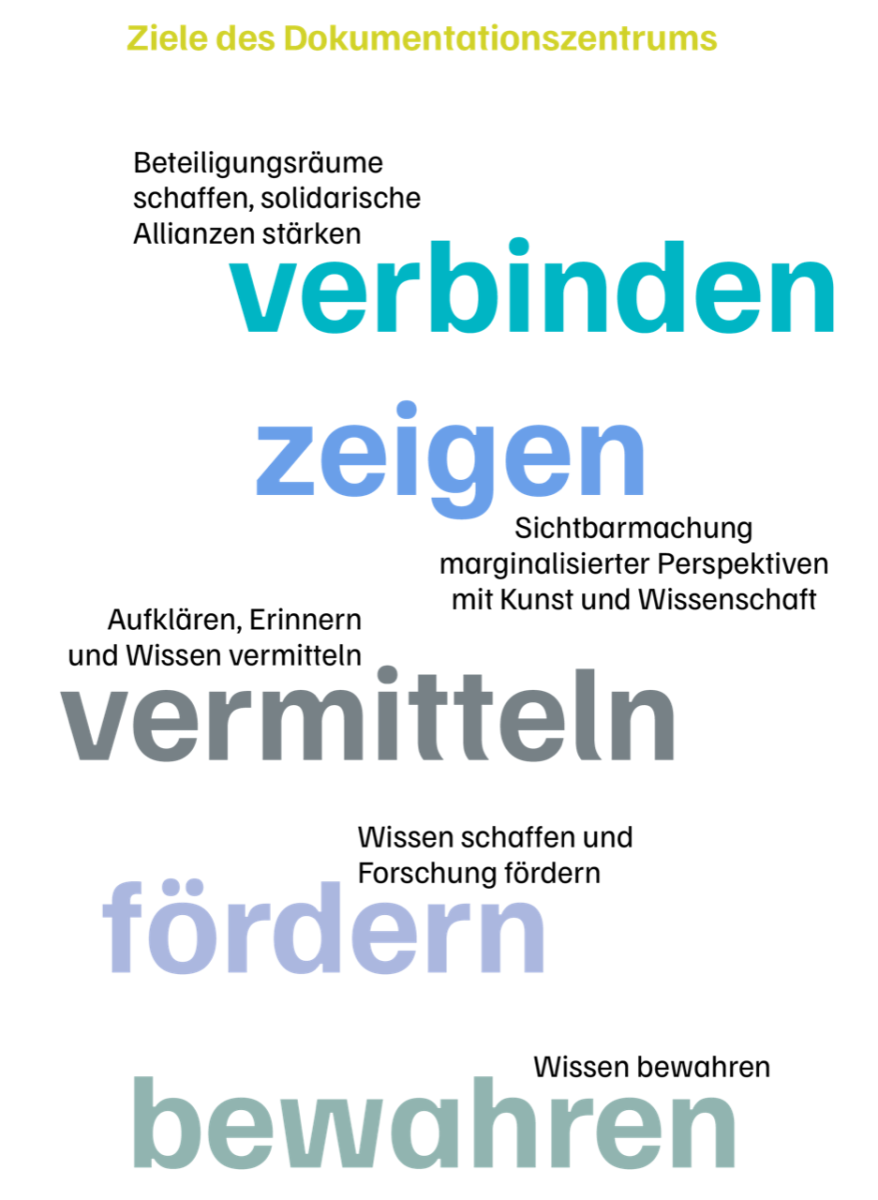
What areas of work is the documentation center supposed to cover?
Six areas of work are defined in the study:
Assembly: a protected place of assembly and self-organization for those affected by right-wing, racist and anti-Semitic violence
Exhibitions: a museum-like space with permanent and temporary exhibitions and in connection with science and art
Education and outreach: a specific pedagogical offering that uses politico-cultural methods to impart knowledge about the NSU complex and lays the foundation for a social unlearning of racism
Research: an academic field of activity for the development of knowledge about the NSU complex as well as about right-wing violence and right-wing terrorist acts after 1945, but also for research on migration, especially in East Germany, and on anti-racist emancipation movements
Archive, collection and library: Documentation areas that actively research and provide the working and material bases for all other work areas and, as living archives, are also part of the artistic and mediation practice of the Documentation Center
Digital space: Transfer of all work areas into the digital realm, which represents a location-independent possibility for action in the sense of a permanent cross-sectional task.
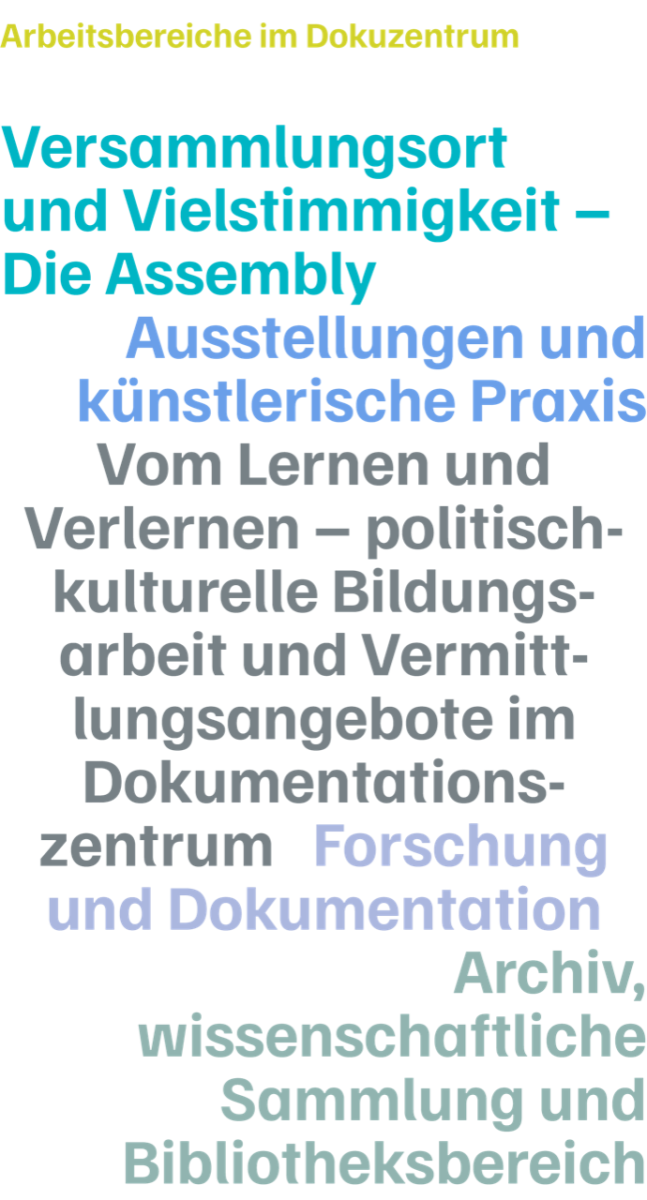
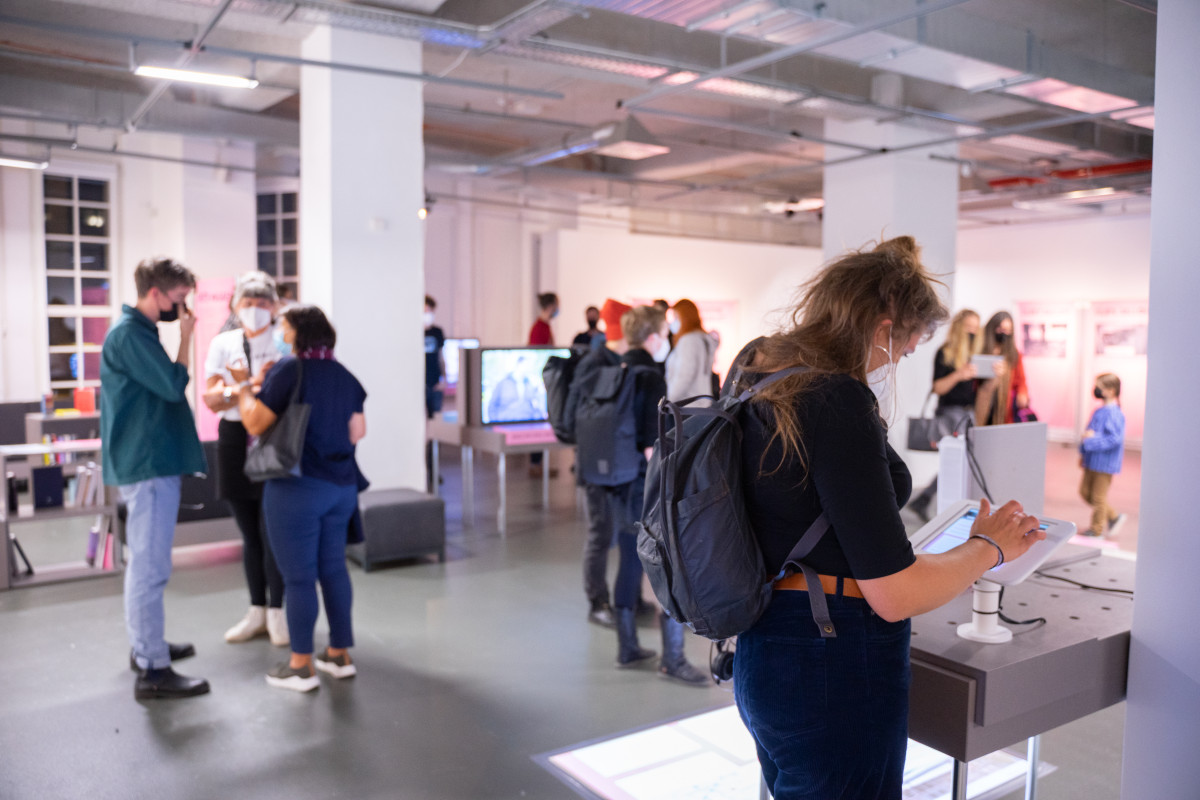

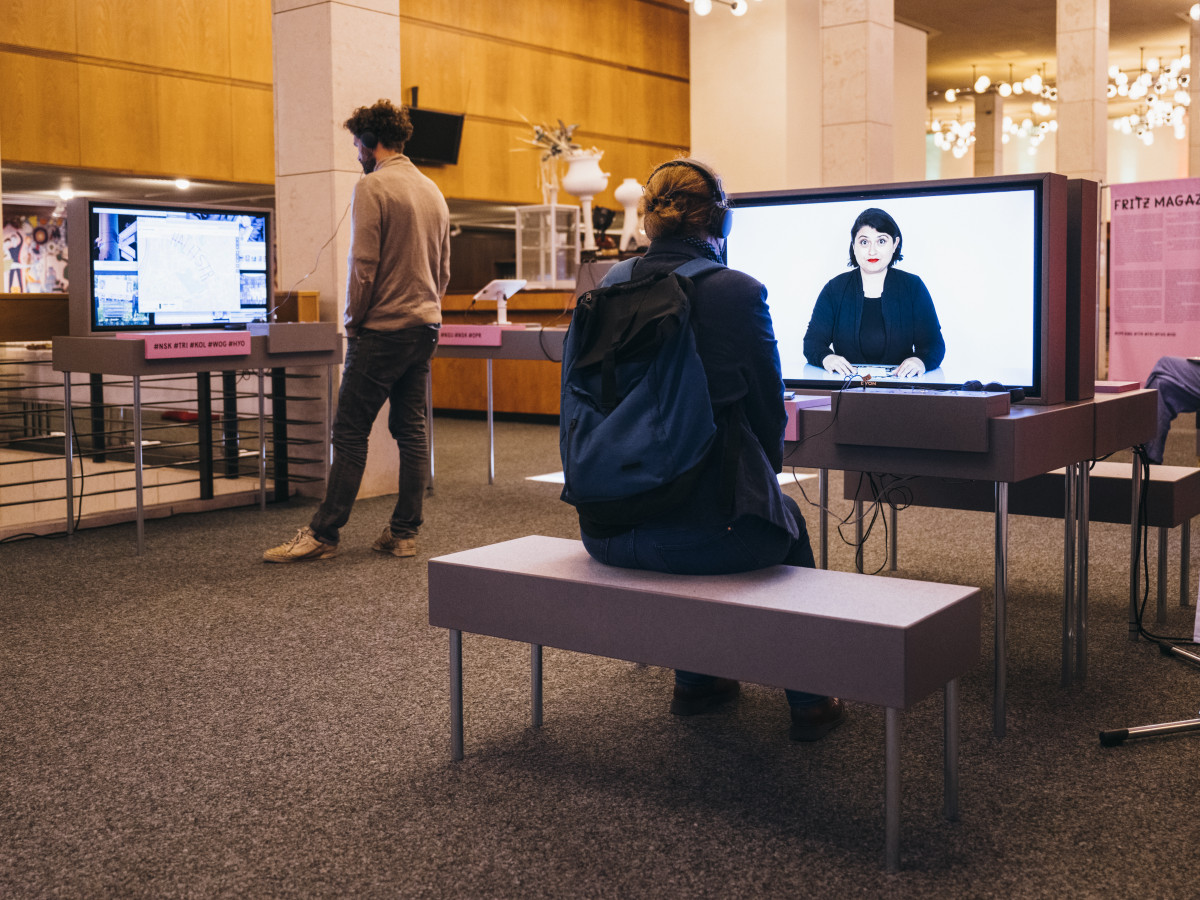
Who is the Documentation Center intended for?
In general, the goal of the Documentation Center is to involve people with their own or family migration history and to strengthen the confidence to act of all people who are affected by racism. This applies to participants and visitors as well as to the full-time staff structure. The study distinguishes between participants who are closely tied to the Documentation Center (victims of anti-Semitic, right-wing and racist violence; cultural actors and artists; researchers) and target groups of its work (adolescents and young adults, international experts, teachers and multipliers, law enforcement agencies, employees of public authorities, urban society and interested members of the public). To this end, it develops criteria for successful audience development.
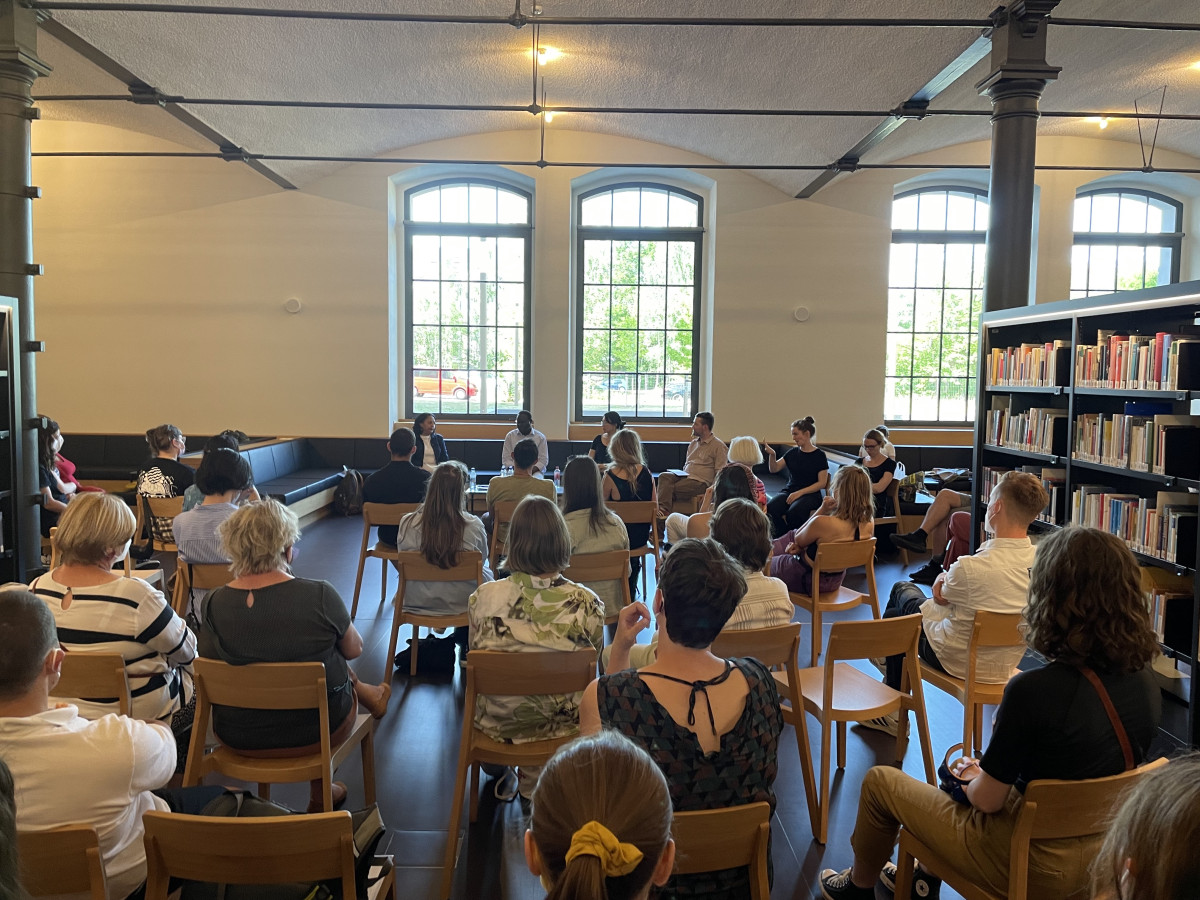
How should people be addressed?
Eine gute Einbindung und Ansprache von Menschen als Publikum und als Partizipierende im Dokumentationszentrum ist ein zentrales Ziel. Erreicht werden soll es durch den Aufbau von langfristigen und nachhaltigen Kooperationen, eine gut ausgestattete Öffentlichkeitsarbeit, barrierearme Möglichkeiten der Teilhabe, den Aufbau einer interagierenden Beziehung zum Publikum sowie eine von vorneherein intensive Digitalstrategie.
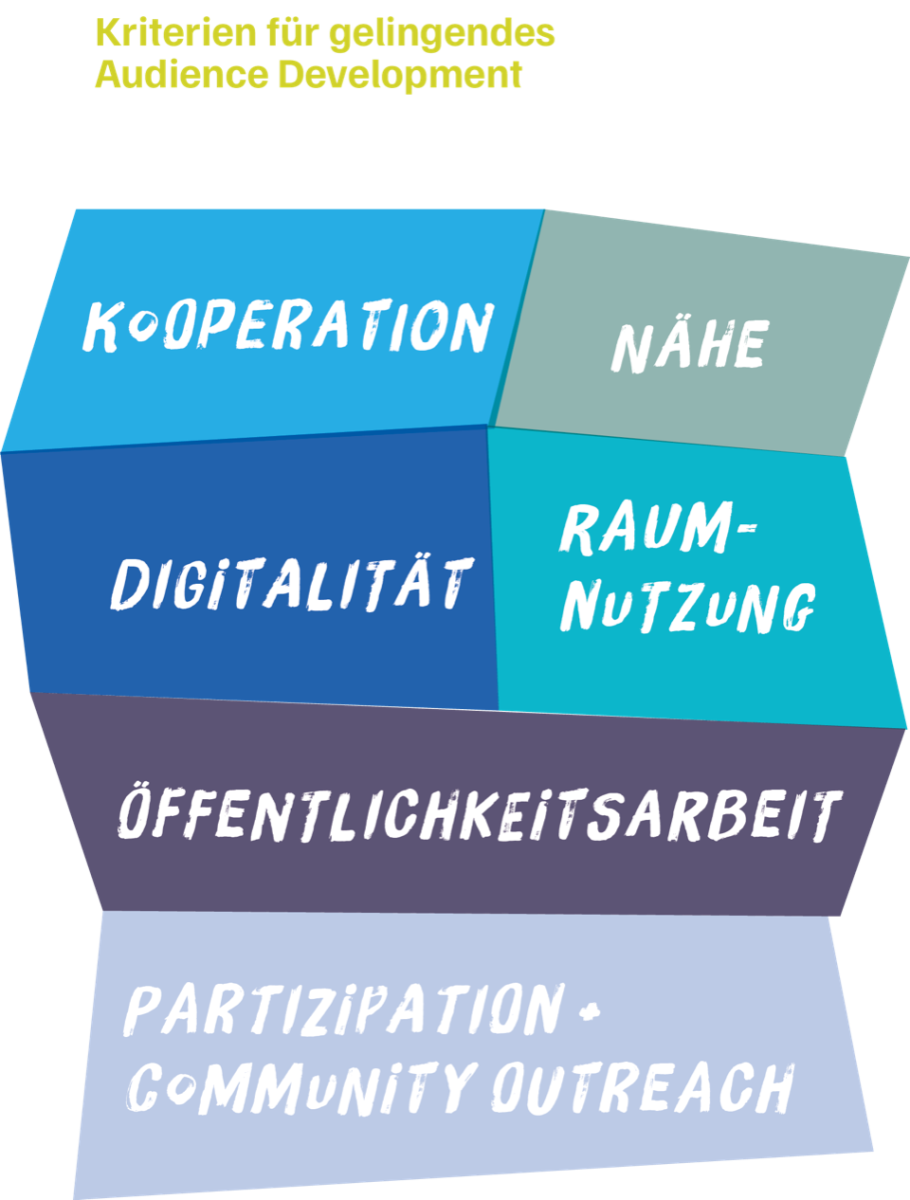
What will the proposed documentation center on the NSU complex cost?
With the defined staffing requirement of 42 positions, annual personnel costs of approximately 2.75 million euros will be incurred. According to initial estimates, investment costs of between 23.9 and 36.4 million euros can be expected for the construction of the documentation center. The annual operating costs are estimated at around 630,000 euros. In addition, there will be an annual budget for material costs for the work areas and a fellowship program.
What is important for the idea of a documentation center on the NSU complex to be effectively implemented?
The founding of the Documentation Center is accompanied by a signal of recognition to those affected: the state and society signal that learning from the NSU complex is necessary and not completed. At the same time, this recognition is intended to go further: For the decision-making bodies around the Documentation Center, it is central to permanently involve those affected, taking into account their needs, and at the same time to involve the social alliance for coming to terms with the past, which is made up of those affected and those committed from civil society, science, art, media and politics. It is also essential that the institution be able to operate independently and with financial security. An organizational form that is compatible with the regulations of public budgets at both the federal and state levels will ensure that the Documentation Center can develop as part of a larger nationwide network.
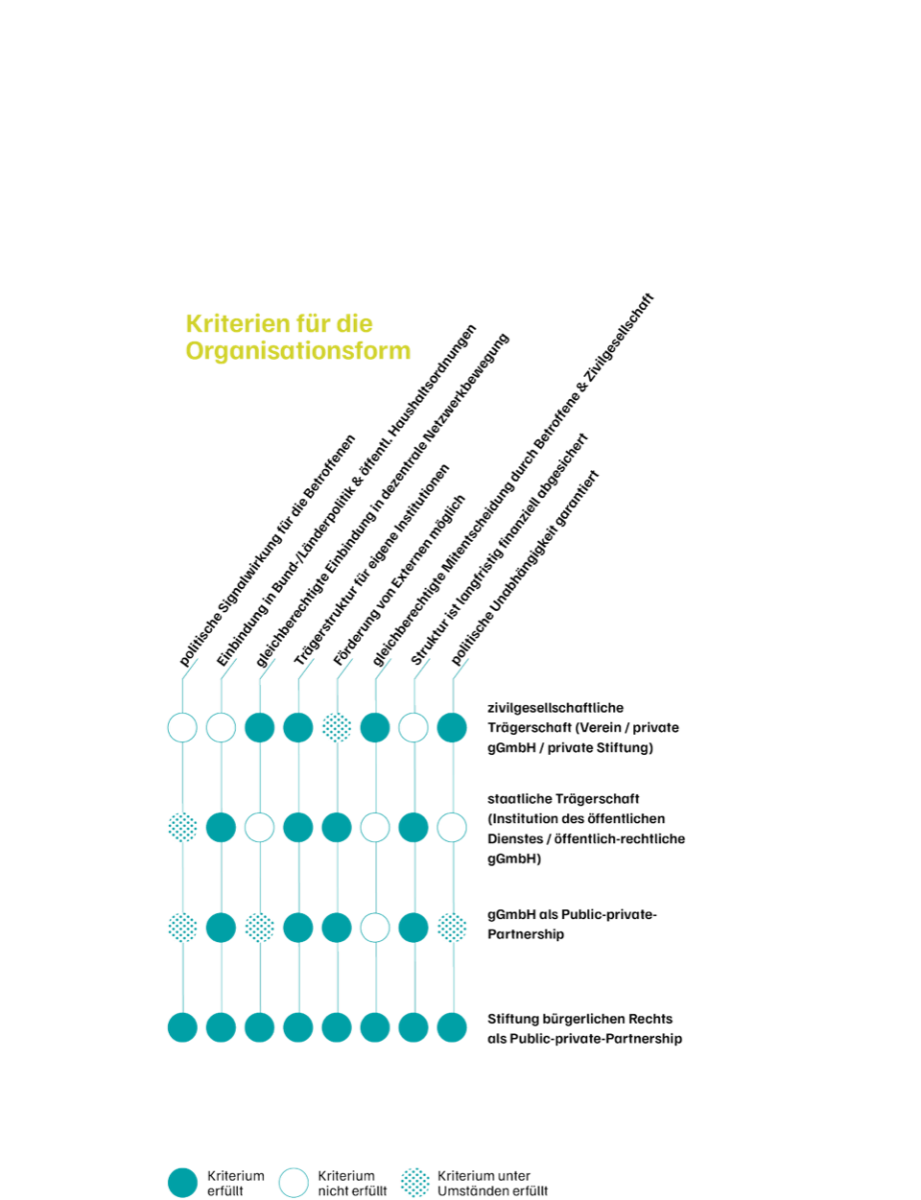
In welchem Verhältnis soll das Dokumentationszentrum zu anderen Initiativen stehen?
Das Netzwerk der Menschen, die sich um Aufarbeitung und Gedenken bemühen, besteht bundesweit. Gedenken und Aufarbeitung gestalten sich an den einzelnen Orten unterschiedlich, haben zum Teil unterschiedliche Schwerpunkte und Bedarfe, verfolgen aber gleiche Ziele. Es braucht eine Organisationsform, die diesem Umstand gerecht wird und die unterschiedlichen Ansätze nicht in Konkurrenz zueinander setzt, sondern möglichst viele davon berücksichtigt und stärkt. Die vorliegende Studie macht hierzu einen konkreten ersten Vorschlag.
How can the documentation center be financed?
After examining various forms of sponsorship, the study recommends the establishment of a foundation under private law, which should be secured through a financing agreement between the federal government and the Free State of Saxony or – depending on the inclusion of other locations – between the federal government and the states.
How does the foundation work?
The foundation can be conceived as a more comprehensive remembrance policy funding instrument and, in addition to the Saxon Documentation Center, can establish other institutions at various locations and have an impact by granting funding, so that it does justice to the reappraisal movement that exists nationwide. It could also take into account other acts of right-wing terror after 1945 that are not or only indirectly connected to the NSU complex. Those affected by the crimes as well as actors from civil society, science, media and art will decide on the foundation's concerns on an equal footing with political representatives from the federal, state and municipal levels. They are supported by a youth advisory board as a board of trustees.
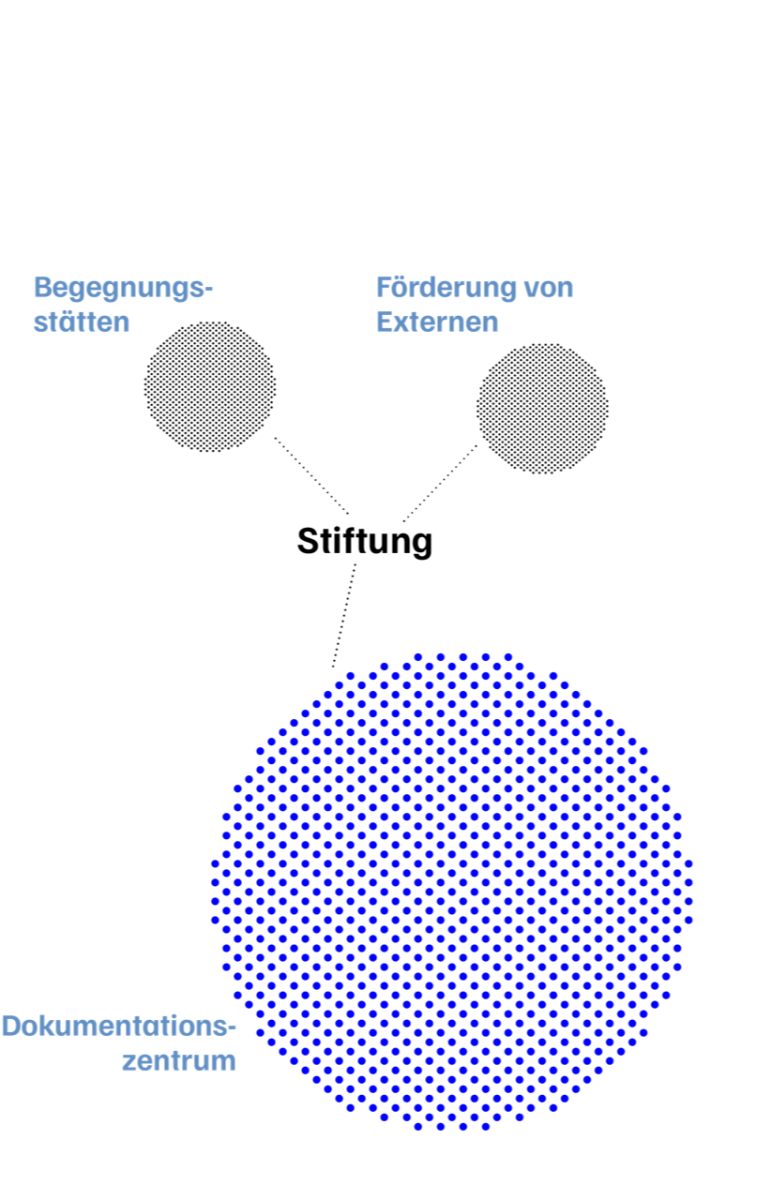
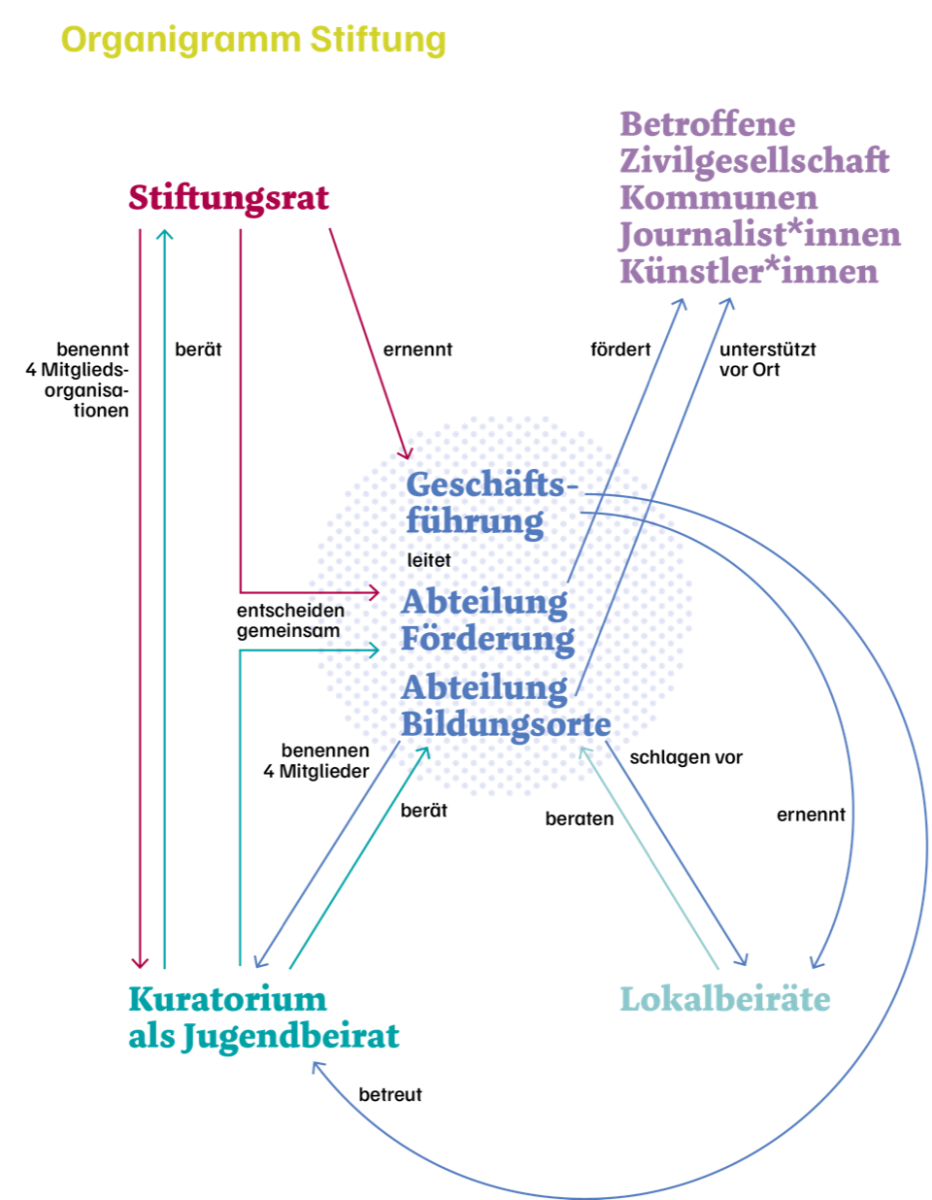
Where will the documentation center be located?
In Chemnitz and in Zwickau. Both places play a central role in the formation of the NSU and form a common space of experience. In Zwickau the idea for such a documentation center was first formulated. Many of those involved started and supported a process as a result of which the implementation of a documentation center is now being discussed throughout Germany.
According to which criteria were the locations examined?
The local reference to the NSU complex, the existence and accessibility of participants and target groups, infrastructural connections and security aspects were taken into account. Furthermore, the study defines criteria for the selection of a location within the city. In addition, the existing building stock, the development potential of a location, its accessibility and the surrounding area are recorded.
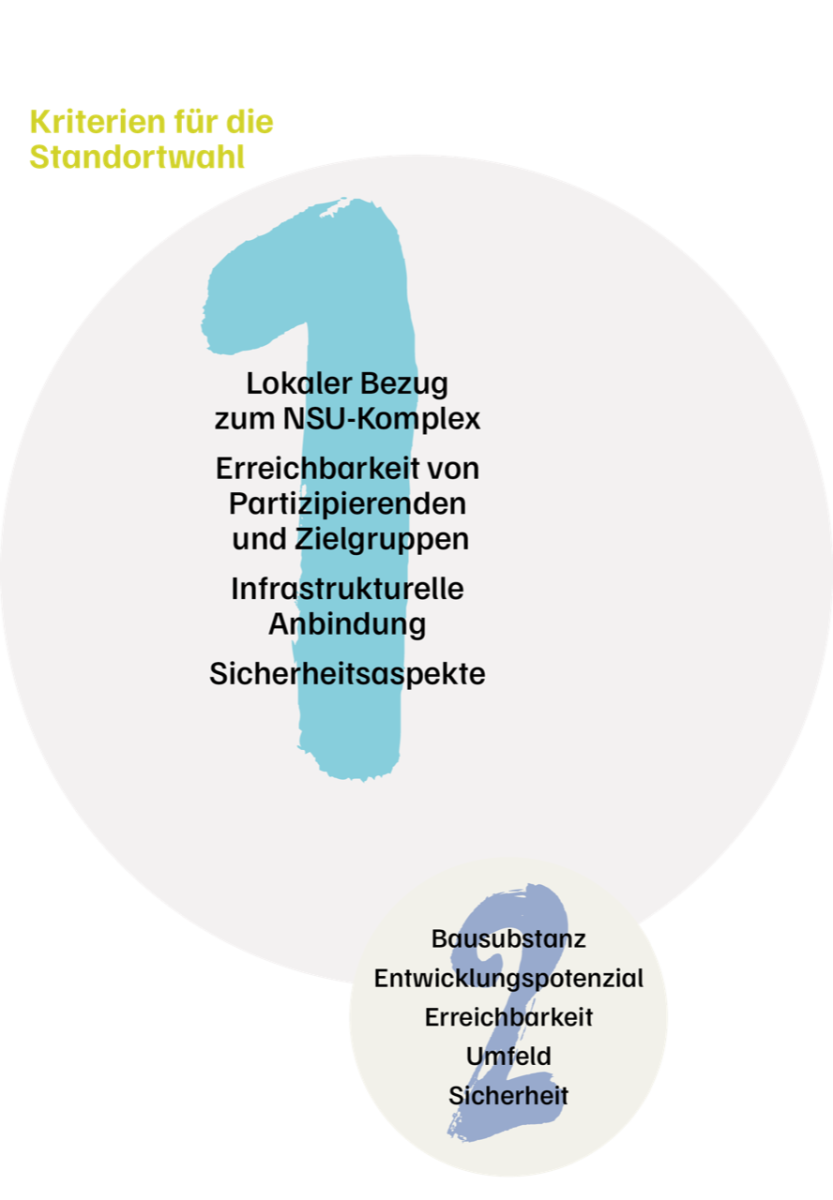
How much space and what building foundations are needed?
The proposed floor space comprises 3000 square meters for Chemnitz and 460 square meters for Zwickau. In view of the existing building stock in both cities and the special consideration of acceptance factors and climate protection aspects, the study recommends building in existing structures. Corresponding conversions should follow the principle of Design for All so that comprehensive accessibility is guaranteed. To ensure the quality of the conversions, an open architectural competition is recommended, which at the same time enables a broad participation process.

Who will work and how will work be organized in the proposed documentation center?
42 positions have been defined by the study, they comprise diverse areas of activity and a wide range of different professions: From scientist and documentarian to café worker and programmer to mediator and house technician. The interdisciplinary approach to work is central, as are the principles of diversity-oriented staff development.
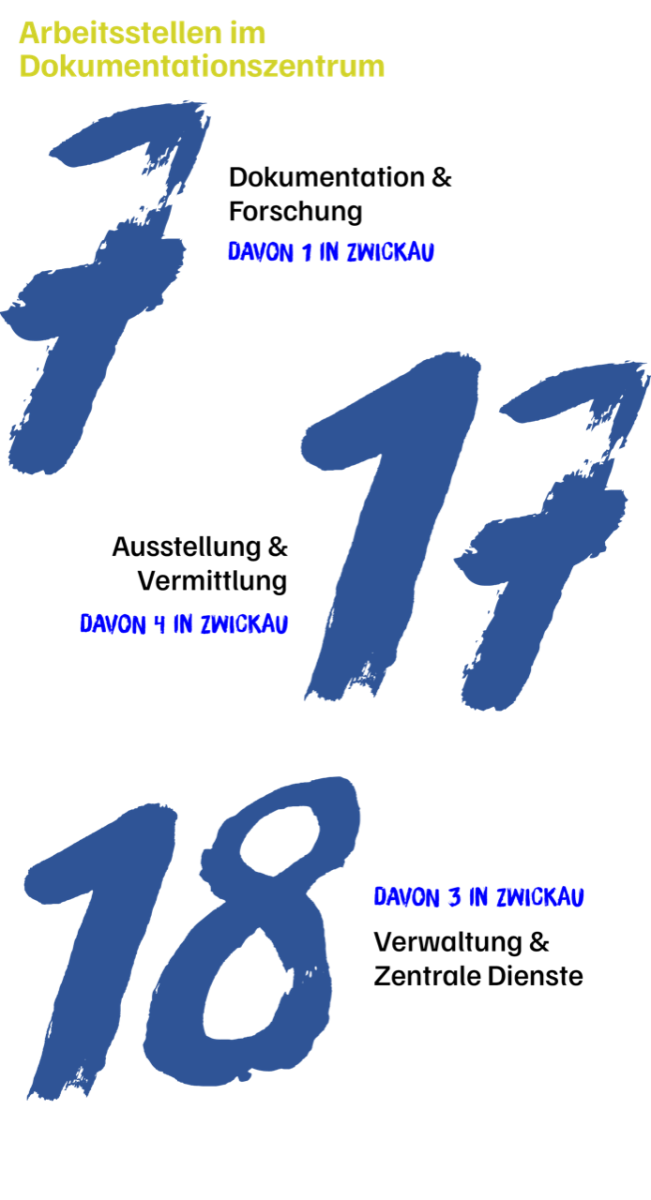
What is the basis of this study?
In response to these long-standing demands for a documentation center, the Saxon state government elected in 2019 has included a pledge of support in its coalition agreement. In 2021, the federal government of Germany also pledged support in its coalition agreement, responding to an open letter initiated by the two Saxon associations ASA-FF and RAA Sachsen, which was signed by over 270 initiatives, organizations and individuals in a short period of time.
Who developed the study?
The study was developed as a cooperation project between RAA Sachsen in Dresden and ASA-FF in Chemnitz. ASA-FF conceived the Open Process exhibition and RAA Sachsen is, among other things, responsible for the counseling centers for victims of right-wing, racist and anti-Semitic violence in Saxony. The work was financially supported by the Saxon Ministry of Justice and for Democracy, Europe and Equality, the Amadeu Antonio Foundation and the foundation Weiterdenken.
How was the study developed?
The basis for the development of the study were three expert forums, which took place from May to June 2022 in Chemnitz as a hybrid event. In addition, literature research and targeted interviews with experts were conducted. Furthermore, the team was supported by a project advisory board of experts and activists from the reappraisal movement, known as the founding circle.
Wie geht es weiter?
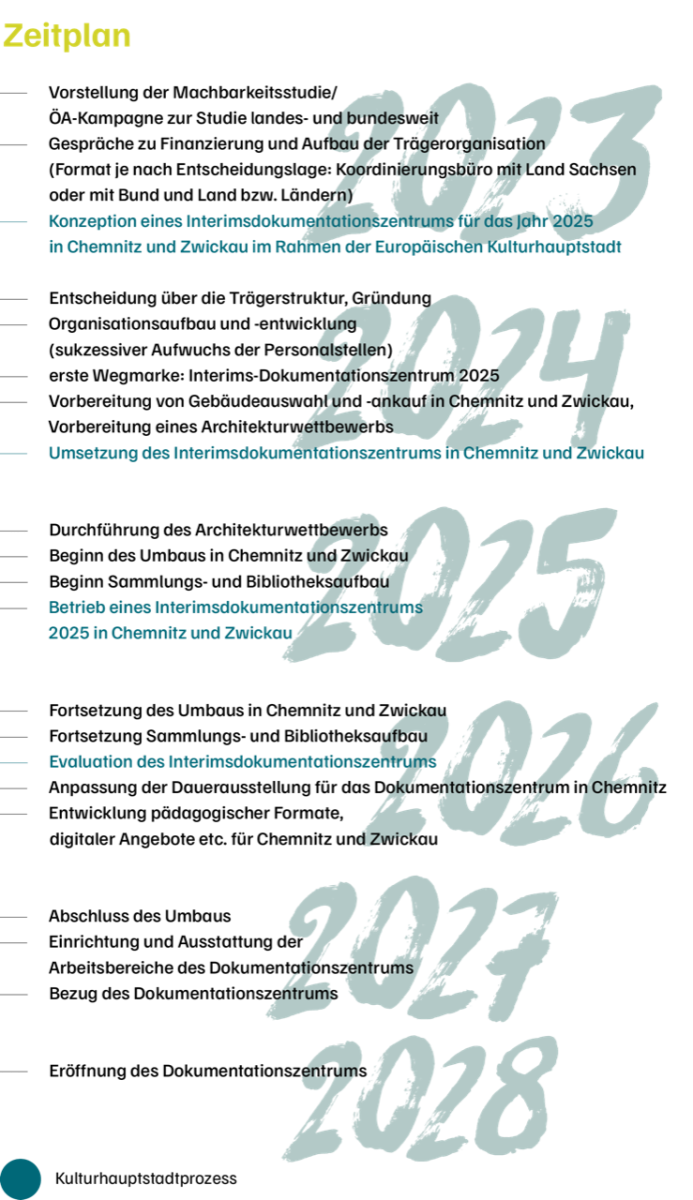
 Contact
Contact English
English Read summary
Read summary Download the study
Download the study